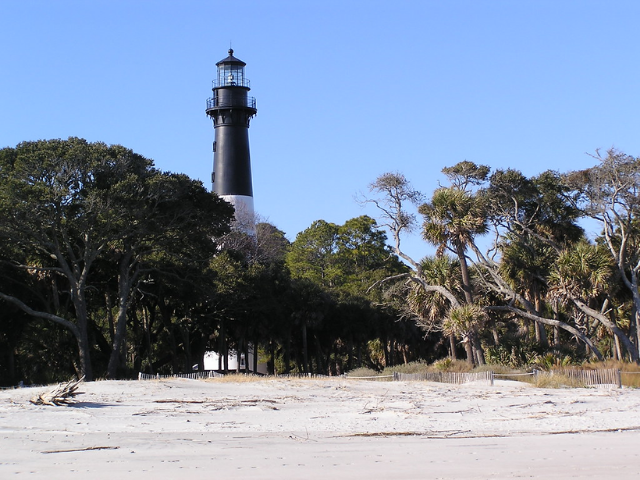
Lighthouse at Hunting Island State Park, near Beaufort, SC (20 December 2010). Flicker user hdescopland. Retrieved 15:01 May 26, 2021.
Both Beaufort County and its county seat Beaufort were named for Henry Somerset, Duke of Beaufort (1684-1714), one of the Lords Proprietors of Carolina. The district was formed in 1769 from the parishes of Prince William, St. Luke, St. Helena, and St. Peter. It remained relatively unchanged in size until 1878 when a large portion was removed to form Hampton County. French explorers visited this area long before the English arrived. They established a fort in 1562, as did the Spanish in 1566; neither of these settlements survived, however. Beaufort, the second oldest town in South Carolina, was founded in 1710. In the years before the Civil War, rice and sea island cotton plantations brought great wealth to the region. Federal troops occupied Beaufort in December 1861, and the first school in the South for freed slaves was established during the Civil War at what is now Penn Center on St. Helena Island. The United States Marine Corps began training recruits at Parris Island in 1915, and later in the twentieth century, Hilton Head Island and neighboring sea islands became popular resort and retirement destinations. Some famous residents of Beaufort County are naturalists Alexander Garden (ca. 1730-1791) and Stephen Elliott (1771-1830); Robert Smalls (1839-1915), a former slave who became a United States Congressman; boxer Joe Frazier; and writer Pat Conroy.


